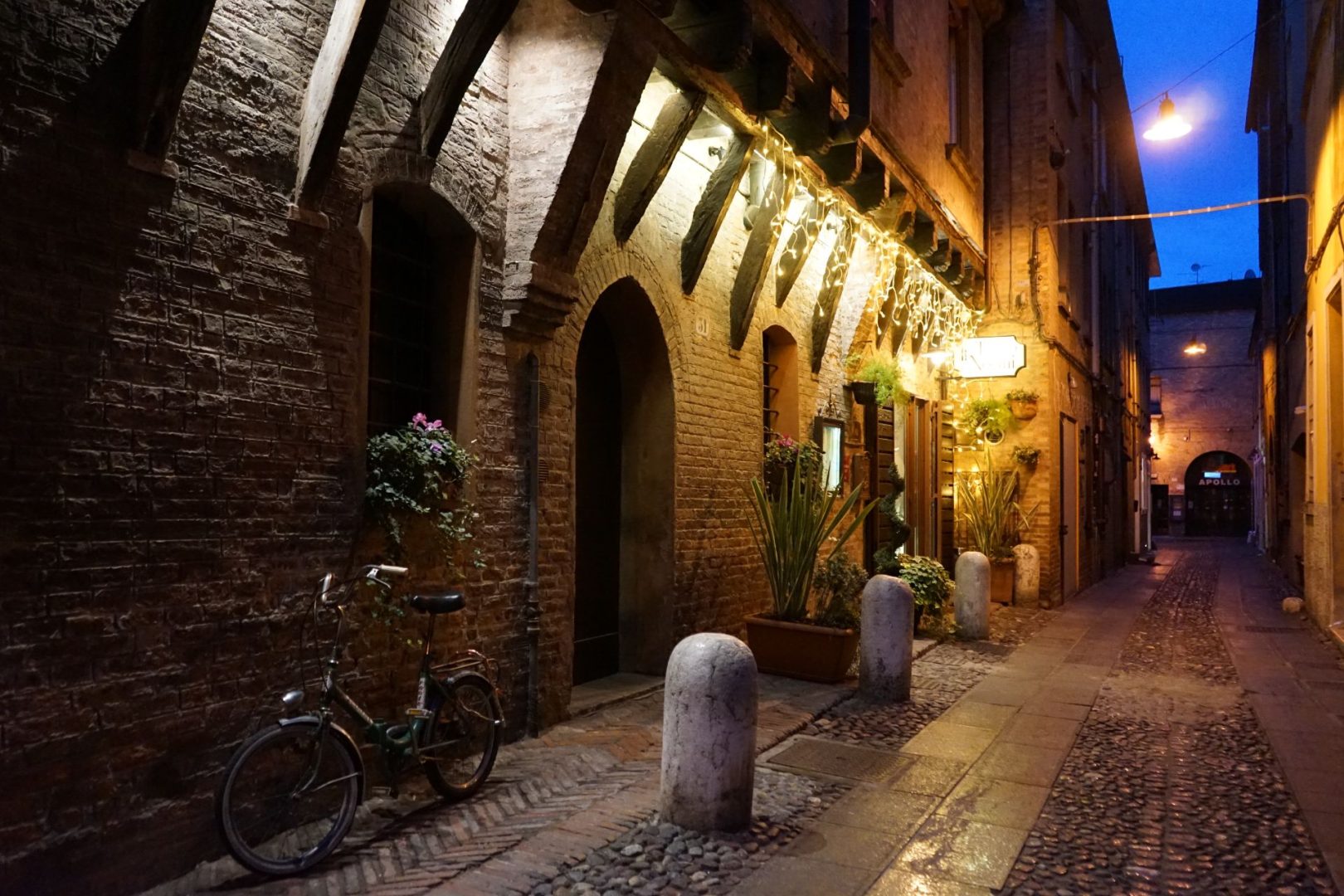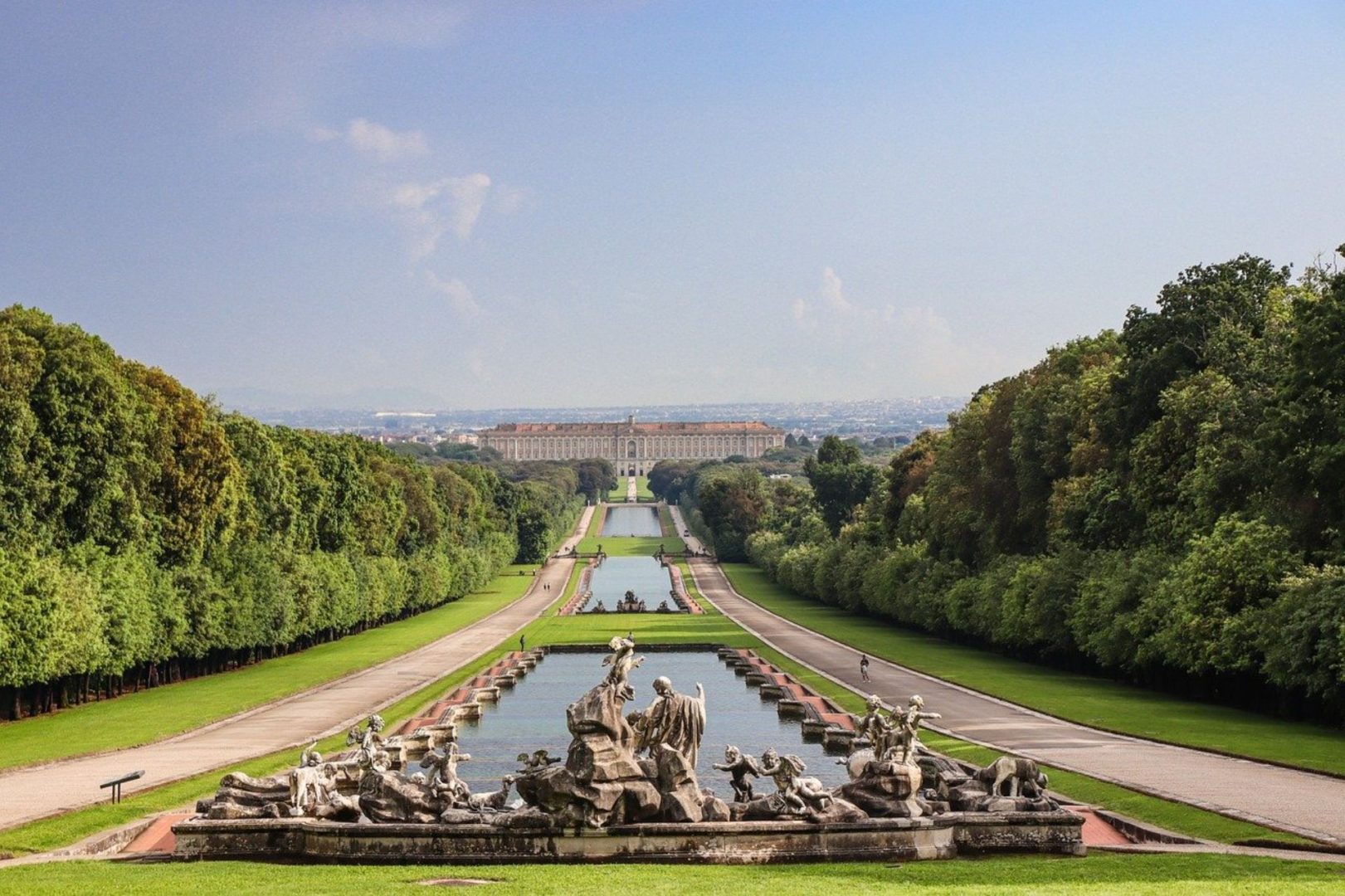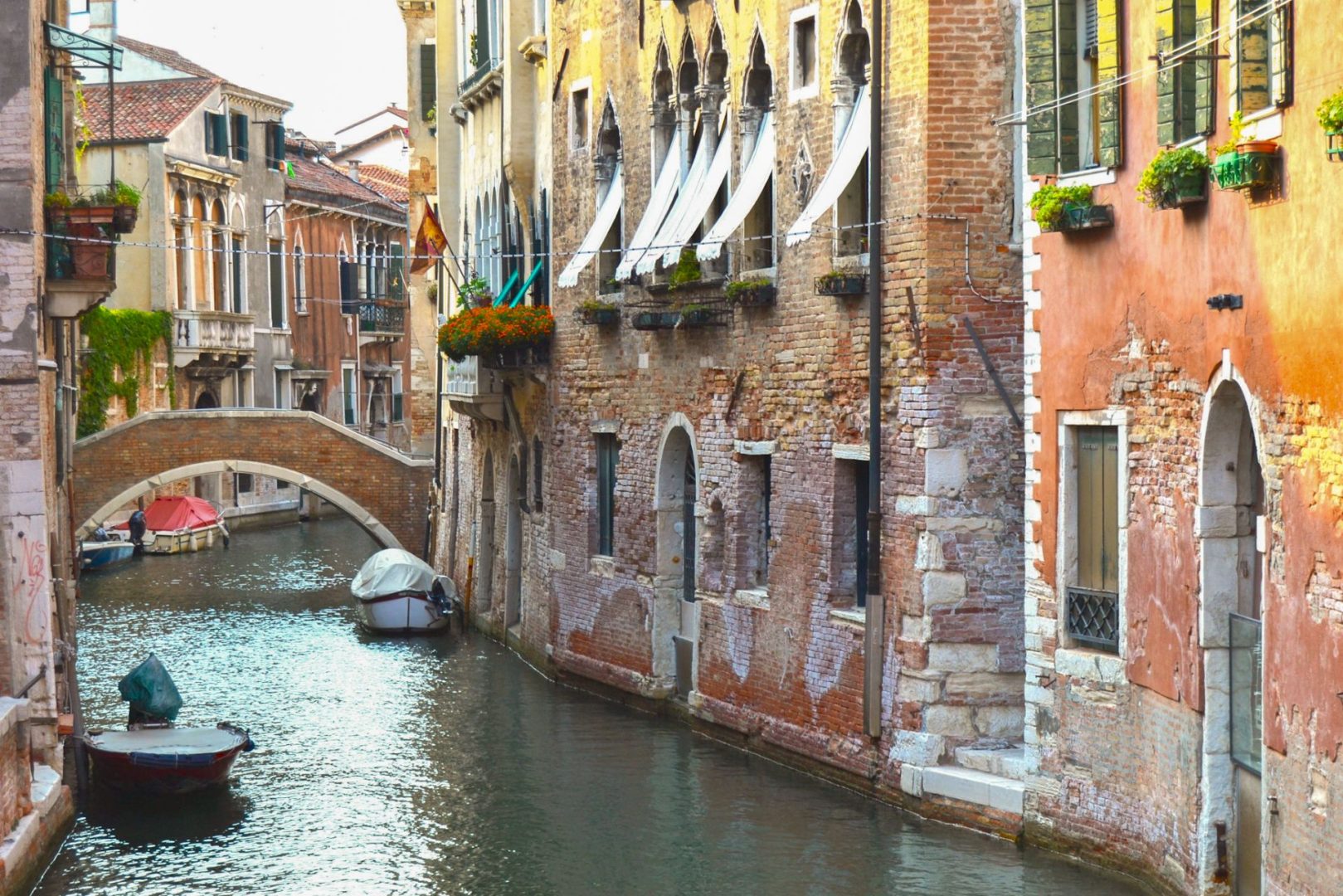Salerno is a delightful coastal town on the eastern edge of the popular Amalfi Coast, home to a number of stunning sights.

Salerno is the place that surprised me more during my recent trip to the Amalfi Coast. It is such a lively, interesting town, yet it is completely under-the-radar.
Capital of Italy from February to July 1944, Salerno is a fascinating town located right between the Amalfi coast and the Cilentan coast, in the Campania region. It’s home to one of the biggest tourist ports in Southern Europe and the birthplace of a prestigious Medical School that was founded in the VIII century.
The rich architectural heritage of its historic center reflects the succession of rulers that dominated Salerno throughout the centuries, including Etruscans, Romans, Lombards, and Normans, and it’s truly beautiful. But I’ll be honest with you, what I appreciated most of this lovely town after touring the Amalfi Coast is the more authentic feel. There are way fewer tourists and because it’s a university town it’s very lively and buzzing every night with locals enjoying an Aperol spritz.
Here below I list of the best sights and landmarks in Salerno.
Cathedral of San Matteo
Although it’s hardly ever mentioned among Italy’s most beautiful churches, I’m sure that Salerno’s Cathedral will make you stand in awe. The entrance is guarded by two lions that lead you to a pretty courtyard surrounded by a portico and overlooked by a 12th-century bell tower. Tip: spot the prayer in Armenic language that was engraved on the bronze portal by a pilgrim on his way to the Crusades.
The interior features many treasures, including two pulpits with beautiful mosaic decorations, a XIV-century Gothic statue of the Madonna with Child and the tomb of Pope Gregory VII, depicted in his red slippers.
 Don’t miss a visit to the crypt, because this is where you’ll literally hear yourself whispering “Ooooooh”. Be ready for an explosion of Baroque beauty, with a fantastic pattern of colorful marble and frescoes. Here lie the relics of the Apostle San Matteo and you can also see a piece of marble column that was used to decapitate some local martyrs (it is said that if you place your ear near it you’ll hear the sound of dripping blood…).
Don’t miss a visit to the crypt, because this is where you’ll literally hear yourself whispering “Ooooooh”. Be ready for an explosion of Baroque beauty, with a fantastic pattern of colorful marble and frescoes. Here lie the relics of the Apostle San Matteo and you can also see a piece of marble column that was used to decapitate some local martyrs (it is said that if you place your ear near it you’ll hear the sound of dripping blood…).
 Cathedral of San Matteo: Piazza Alfano I, entrance is free, www.cattedraledisalerno.it
Cathedral of San Matteo: Piazza Alfano I, entrance is free, www.cattedraledisalerno.it
Minerva’s Gardens
The Minerva Gardens were founded in the XIV century by Salernitan physician and botanist Matteo Silvatico to provide medicinal herbs and plants to the renowned Medical School of Salerno. There are lots of plant species, mostly those used in the past as medicinal plants, including the legendary mandrake, which was believed to have special powers.
 Guys, what a jewel. Although small, these gardens are the perfect spot to enjoy some peace and quiet on a hot afternoon, under the shade of beautiful bowers. Oh, and you’ll also be surrounded by the sound of the water, thanks to an ingenious irrigation system consisting of a network of waterways, fountains, and springs. Oh, did I mention the views? The Minerva’s Gardens are built vertically up the hill, with a system of 5 terraces from which you can enjoy some pretty amazing views over the old town and port.
Guys, what a jewel. Although small, these gardens are the perfect spot to enjoy some peace and quiet on a hot afternoon, under the shade of beautiful bowers. Oh, and you’ll also be surrounded by the sound of the water, thanks to an ingenious irrigation system consisting of a network of waterways, fountains, and springs. Oh, did I mention the views? The Minerva’s Gardens are built vertically up the hill, with a system of 5 terraces from which you can enjoy some pretty amazing views over the old town and port.
 Everything that grows in the gardens can be tasted in the lovely tearoom with outdoor seating, where you can take a break while enjoying the beautiful views.
Everything that grows in the gardens can be tasted in the lovely tearoom with outdoor seating, where you can take a break while enjoying the beautiful views.
The Minerva’s Gardens can be reached with a 10-minute stroll from the Cathedral (be ready to climb hills to get there, though) or by taking the public lift up the hill from via Portacatena.
Giardino della Minerva: via Ferrante Sanseverino 1, closed Mondays, the entrance fee is 3 euros. www.giaridnodellaminerva.it
Roberto Papi Museum
About 5 minutes away from the Minerva’s Gardens you’ll find the Roberto Papi Museum, housed inside an aristocratic palace. It’s an unusual museum that displays the private collection of medical and surgical instruments owned by Dr. Papi. I’m not talking about a few pieces, but thousands of instruments arranged over two floors!
Instruments are grouped by medical and surgical disciplines and include anything from false teeth and anatomical eyes to ceramics and paintings on the medical theme. The coolest thing to see, though, is the reproduction of old medical settings and laboratories, such as the dreadful “cavadenti” (an old dentist’s surgery).
This is surely a hidden gem but if you like medicine or on the hunt for quirky museums to explore, then this is the place for you. Bonus point for the panoramic views from the terrace on the second floor of the museum.
Museo Roberto Papi: Via Trotula de Ruggiero 23, open Thursday-Sunday only, the entrance fee is 3 euros. Check out their Facebook page for further info.
The Medieval Aqueduct
While strolling around the city center, look for the remnants of the Medieval Aqueduct amid the apartment blocks of Via Velia. It was built by the Lombards in the IX century to supply water to the monastery of St. Benedict along the eastern walls of the town. The structure consists of two branches and is characterized by pointed arches that were quite unusual at that time.
 The aqueduct was nicknamed “Devil’s Bridge” because according to the legend, it was built in one night by Salernitan alchemist Pietro Barliario with the help of demons. Popular superstition also held that venturing under the arches between dusk and dawn would have brought personal encounters with evil spirits.
The aqueduct was nicknamed “Devil’s Bridge” because according to the legend, it was built in one night by Salernitan alchemist Pietro Barliario with the help of demons. Popular superstition also held that venturing under the arches between dusk and dawn would have brought personal encounters with evil spirits.
Just a few steps before the aqueduct, take a look at the impressive mural by Alice Pasquini inspired by Italian poet Alfonso Gatto. His hermetic poems are painted on the stairs of Scalinata dei Mutilati.
 Medieval Aqueduct: at the intersection between Via Velia, Via Arce and Via Fieravecchia.
Medieval Aqueduct: at the intersection between Via Velia, Via Arce and Via Fieravecchia.
Villa Comunale and Giuseppe Verdi Theatre
Villa Comunale is a pretty public park, with plenty of places to sit and enjoy both sunshine and shade. It’s quite small, but it’s a good place for a pleasant break in-between visits and some people watching. The park truly comes to life during the Luci D’Artista light show that takes place around Christmas time, when the park is filled with beautiful light installations all.
 Next door is the Theatre named after Italian composer Giuseppe Verdi. It was inaugurated in 1872 with a performance of Rigoletto and the interesting thing is that it was built using measurements and proportions of Naples’ San Carlo Theatre.
Next door is the Theatre named after Italian composer Giuseppe Verdi. It was inaugurated in 1872 with a performance of Rigoletto and the interesting thing is that it was built using measurements and proportions of Naples’ San Carlo Theatre.
Teatro Giuseppe Verdi – Largo Luciani, www.teatroverdidisalerno.it
Church of San Giorgio
There are many churches and religious buildings in Salerno but the Church of San Giorgio is perhaps the most beautiful of all. It’s easy to miss it because it’s been incorporated into the barracks of the local Guardia di Finanza (finance police) and Carabinieri, so it’s not immediately clear that there’s a church in there. But as soon as you step inside, you’ll be amazed by its richly decorated interiors.
 This church is considered to be a jewel of Baroque art and contains precious paintings and amazing frescoes. Take a look also at the beautiful marble altar and the antique organ on the right-hand side.
This church is considered to be a jewel of Baroque art and contains precious paintings and amazing frescoes. Take a look also at the beautiful marble altar and the antique organ on the right-hand side.
Church of San Giorgio: via Duomo, 19, free entrance
Church of Santa Maria de Lama
Do you know when you just happen to be in the right place at the right time? Well, that’s how I discovered this church. I was walking back to the Cathedral after visiting Minerva’s Gardens when I saw a little sign indicating the Church of Santa Maria de Lama. Sadly, it appeared to be closed but when I tried to open the portal (because I always give it a try…) I noticed that it wasn’t and…wow, what a surprise! This little church is one of the oldest in Salerno and preserves some beautiful, ancient frescoes.
 The church was built when Salerno was under the Lombard power, between the X and the XI centuries. Today it’s run by the volunteers of the Italian Touring Club, who open it to visitors a couple of days a week.
The church was built when Salerno was under the Lombard power, between the X and the XI centuries. Today it’s run by the volunteers of the Italian Touring Club, who open it to visitors a couple of days a week.
Church of Santa Maria de Lama: via Gradoni Madonna della Lama 29, open Saturdays and Sundays 10 am- 1 pm, free entrance (although I suggest leaving a little donation to help these fantastic volunteers)
Arechi Castle
When strolling around Salerno look up and you’ll see the imposing Arechi Castle, standing high up on a hill overlooking the town. Lombard duke Arechi II built it the VIII century as a defensive fortress for his reign. In later times, it became an important stronghold for the Normans and the Aragonese and was gradually abandoned in the XIX century.
The views over the Gulf of Salerno are simply spectacular from up there and there is also an interesting exhibition of ceramics and metal instruments to browse.
Arechi Castle: via Benedetto Croce, entrance fee is €4, www.ilcastellodiarechi.it/. To reach the castle hop on bus #19 from the stop in front of the Giuseppe Versi Theatre, tickets cost €1.20 and you can buy them at any ‘Tabacchi’. Check out the timetable though, as I remember that there are only a handful of buses going in that direction throughout the day.
Lungomare Trieste and Santa Teresa Beach
Salerno is a seaside town and one of its landmarks is undoubtedly Lungomare Trieste, a fantastic 2-km seafront promenade that connects the town’s old harbor with Santa Teresa Beach. It reminded me of the seafront promenade I saw in Reggio Calabria during my road trip adventure in Calabria a couple of years ago, although I admit that I like this one more.
 The lungomare is traffic-free and lined with palm trees and lots of benches to sit and enjoy a refreshing gelato while watching locals busy in all sorts of activities.
The lungomare is traffic-free and lined with palm trees and lots of benches to sit and enjoy a refreshing gelato while watching locals busy in all sorts of activities.
 It can be crowded, especially on weekends, but not in an annoying way. It’s just full of life with locals enjoying the ritual passeggiata, groups of youngsters chatting and tourists getting a real feel for the town. Make sure you arrive in time for an aperitivo at the little kiosk of the urban beach of Santa Teresa for a spritz with a view.
It can be crowded, especially on weekends, but not in an annoying way. It’s just full of life with locals enjoying the ritual passeggiata, groups of youngsters chatting and tourists getting a real feel for the town. Make sure you arrive in time for an aperitivo at the little kiosk of the urban beach of Santa Teresa for a spritz with a view.
Salerno’s nightlife
Salerno is known for its vibrant nightlife, the movida. When the sun goes down students and locals mix and mingle with tourists in the streets and in the cozy bars and trattorias scattered around town.
 Particularly lively are Piazza Largo Campo and Piazza Flavio Gioia, also known as the “Rotonda” because of the rounded shape created by the palazzi that line it.
Particularly lively are Piazza Largo Campo and Piazza Flavio Gioia, also known as the “Rotonda” because of the rounded shape created by the palazzi that line it.
Salerno’s street art
The street art scene is thriving in Salerno, with fantastic colorful murals decorating the town’s walls.
The infamous Rione Fornelle, a neighborhood close to the Verdi Theatre, has been recently revamped through street art. The worn-out walls of its old apartment blocks have been covered in beautiful murals and residents now live surrounded by poetry.
 Not to miss is also Vicolo San Bonosio, which has been dubbed the “street of poetry” because its walls are covered with compositions of local poet Alfonso Gatto.
Not to miss is also Vicolo San Bonosio, which has been dubbed the “street of poetry” because its walls are covered with compositions of local poet Alfonso Gatto.
 USEFUL TIPS
USEFUL TIPS
- Salerno is easily accessible by high-speed trains with Frecciarossa and Italo from all major Italian cities. Its position makes it a great base to explore Pompei, Paestum, the Royal Palace of Caserta and the Amalfi Coast.
- If you are planning to visit the Amalfi coast without breaking the bank, then you should consider using Salerno as a base. There are ferries running regularly between Salerno and the pearls of the Amalfi Coast, which means that you wouldn’t have to wait countless time for a bus to show up (rule #1, never trust the timetable of Sita Sud buses, they show up pretty randomly – trust me, I write from experience.). Check out the Travelmar website for the ferry schedule and prices. Ferries depart from Piazza Concordia.
- There are also ferries from Salerno to Capri and Ischia leaving from Manfredi in Piazza della Libertà
- Another good reason is that Salerno is much more relaxed and authentic compared to the towns and villages of the Amalfi Coast, which are beautiful, sure, but also way too touristy.
- I stayed at Vittoria Guest House, a brand new lodging just a stone’s throw from the station. It’s cheap, super clean, fully furnished (there’s even a coffee machine in the room) and the hosts are very helpful. I totally recommend it.
- The most traditional eatery in town is Vicolo della Neve, where you’ll get Cilentan recipes presented in clay bowls, then grab some scazzette (cakes like small zucotti at historic pastry shop Antica Dolceria Pantaleone in Via dei Mercanti. And don’t forget to try a cuoppo, a thick paper cup stuffed with fried seafood that you can find in many bars and trattorias around town.
I love Salerno, it’s officially one of my top favorite cities in Italy! It truly has it all: historic landmarks, fantastic nightlife, amazing food, and the sea. It’s such a shame that most visitors never go much beyond the more popular towns of the Amalfi Coast. And you guys? Have you ever been to Salerno?
Until next time,
![]()








Loved the post, the layout. I agree 100% with you. Salerno is charming, handy, safe, and under rated!
Thanks so much 😀
Salerno looks SO pretty, these photos are just stunning. Love love love the street of poetry !!! Xx
Exploring Salerno for the first time was such a surprise, so much beauty everywhere I looked!
How have I not heard of Salerno? I’ve been to the Amalfi Coast and am headed back there in October. Will definitely add this to my list of places to check out. The churches in Salerno are stunning!
Oh yes, do it! Salerno is such a must-see when touring the area!
I love Italy, especially the Amalfi Coast area! Minerva’s Gardens looks like a place I’d love to hang out. I also like how you included information about the nightlife and street art.
The Minerva’s Gardens are so pretty and quiet, I loved that place so much!
Wow these pictures are truly amazing! I never cease to be amazed by this coast and I love that you have highlighted a mix of culture, religion, and art in your post. The nightlife looks really cool too 🙂
Thanks a lot Erika!
I am always impressed that the ancient aqueducts are still around. Salerno looks like an amazing town and you have listed many places I would love to see in person. Pinning for a future trip!
Thank you Lauren!
Salerno is such a beautiful little town! The architecture really captured my attention, especially the Medieval Aqueduct. I would love to visit one day!
I fell in love the moment I arrived, such a pretty town!
Italy is by far, my favourite country to visit. I’ve seen quite a lot of it, but I know there’s still so much more. I did the Amalfi Coast last year, along with Positano, Capri and Sorrento, but never got to this area. It looks incredible and I have just added it to my list of places to visit!
I know, there’s such a variety of places to see and experiences to do here in Italy right? All good reasons to come back soon 😀
I have heard a lot about Salermo, from your pictures it looks so relaxed and very italian. Which is, of course, a good thing, I love italian culture and this looks like a perfect holiday 🙂
Exactly Albina, that’s why I suggest Salerno as a good base to explore the Amalfi Coast… Positano and Amalfi are gorgeous but waaaaaay too crowded!
Wow, this is a stunning area of Italy. I’ve been to Cinque Terre but not the Amalfi Coast yet. Did you enjoy the food?
Oh yeah, the food is super delicious, lots of fresh fish!
I have only heard wonderful things about the Amalfi Coast, but have not heard the privilege of visiting yet. I’ve actually never heard of Salerno and it looks absolutely charming. Love the seafront and the rich architecture. We are planning on visiting more of Italy next year and adding Salerno to the list.
That’s great Rosemary, Salerno is definitely a place to visit on any visits to the Amalfi coast!